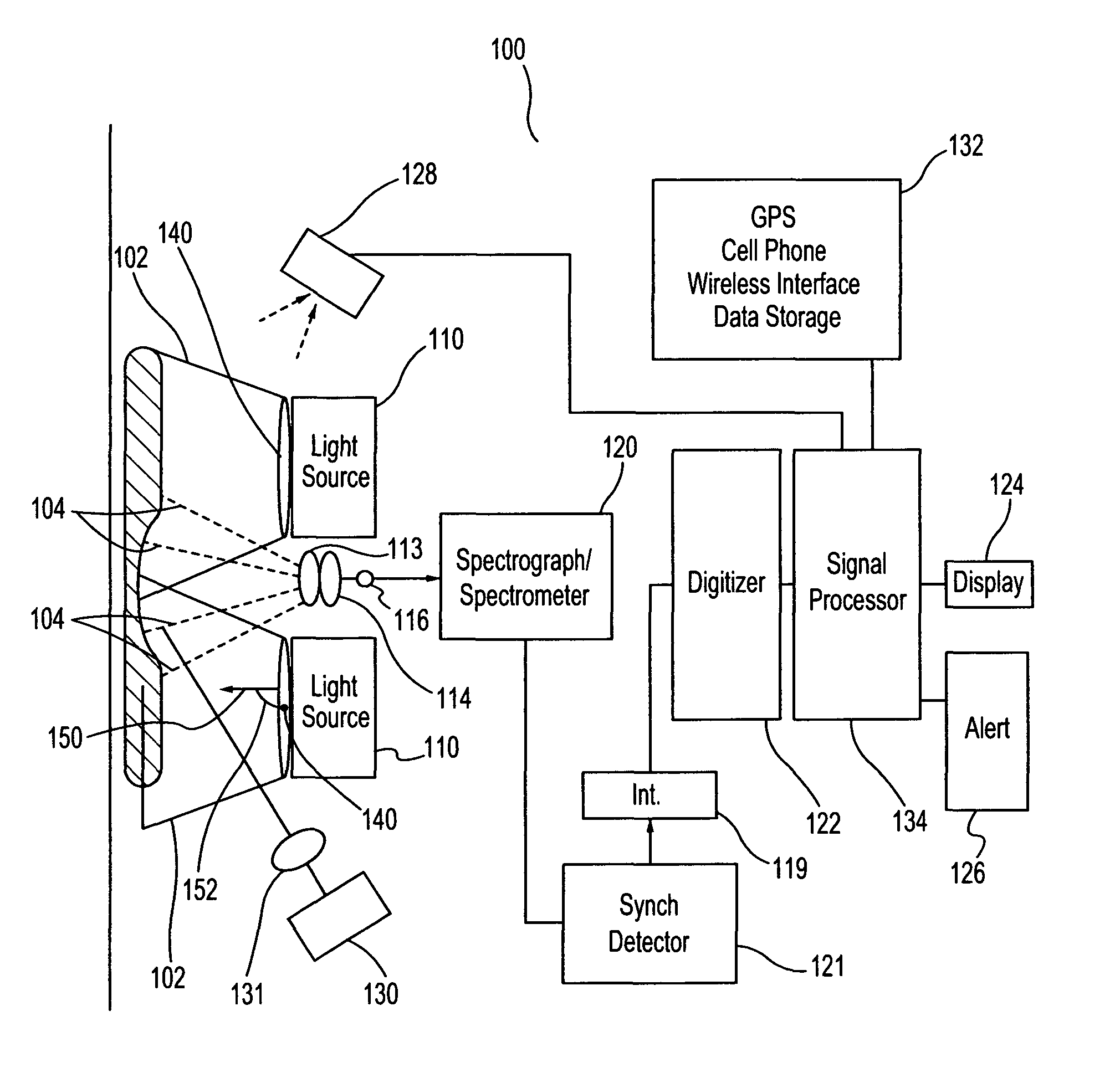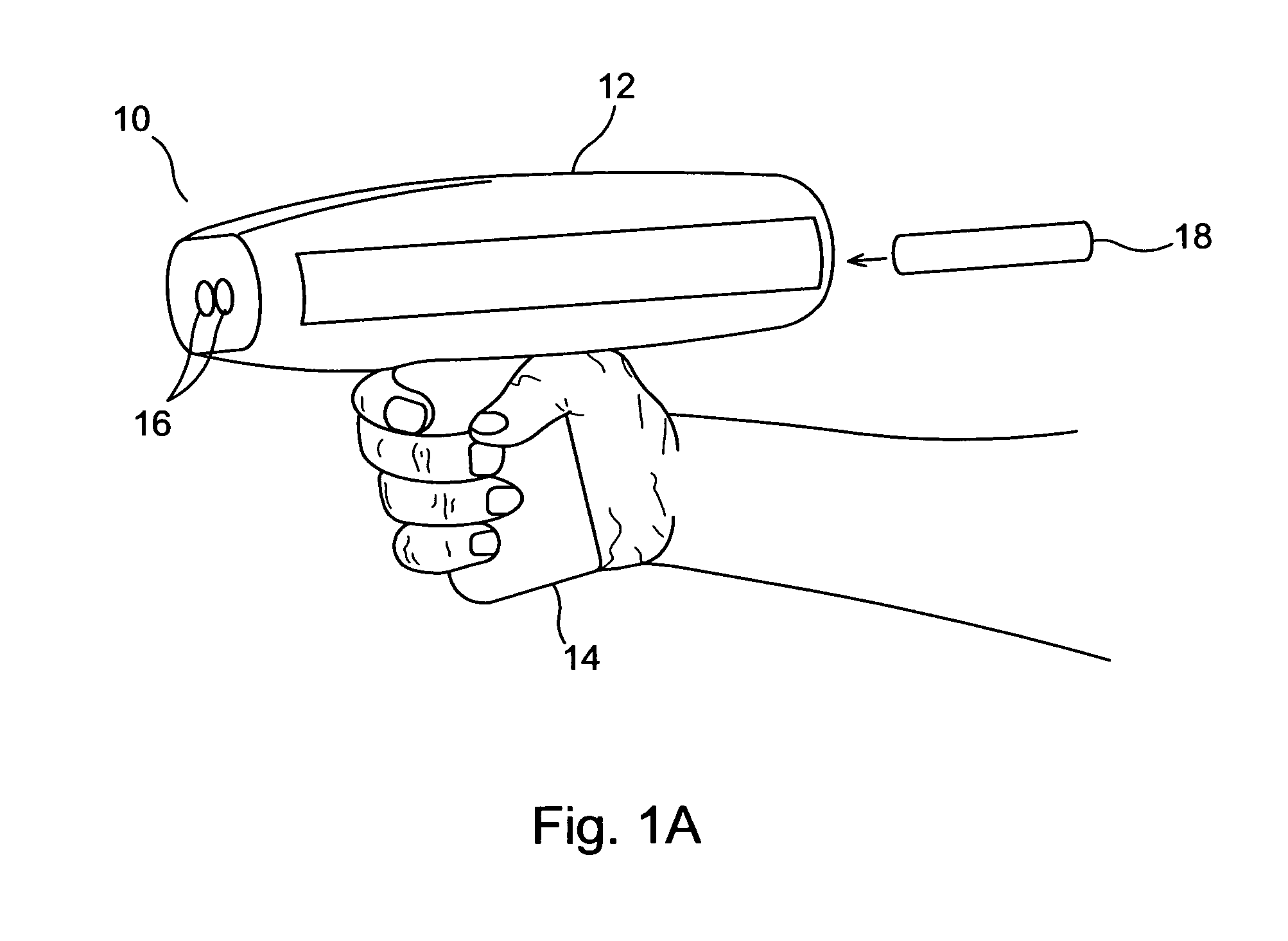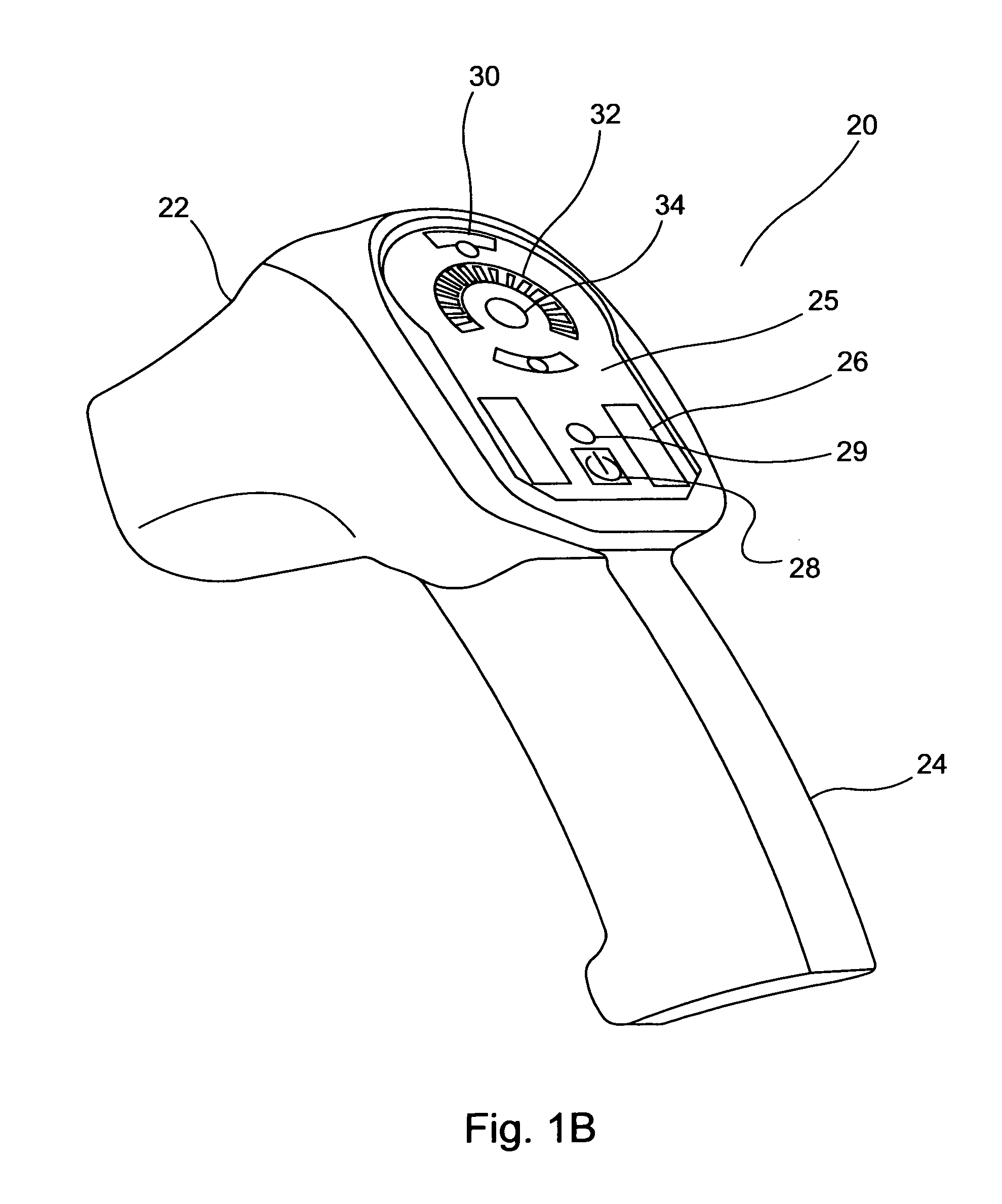Substance detection, inspection and classification system using enhanced photoemission spectroscopy
a technology of enhanced photoemission and substance detection, applied in the field of substance and material detection, inspection and classification, can solve the problems of interference, uv to nir eps systems are also limited in terms of sensitivity distance, and each of these methodologies suffers from deficiencies
- Summary
- Abstract
- Description
- Claims
- Application Information
AI Technical Summary
Benefits of technology
Problems solved by technology
Method used
Image
Examples
Embodiment Construction
[0036]Aspects of the invention are disclosed in the accompanying description. Alternate embodiments of the present invention and their equivalents are devised without parting from the spirit or scope of the present invention. It should be noted that like elements disclosed below are indicated by like reference numbers in the drawings.
[0037]The invention relates to a system and methods for material detection, inspection, and classification. In particular, an electronic scanning detection system (e.g., an EPS spectrograph) with a high degree of specificity and accuracy, operating in the ultraviolet to near infrared portion of the electromagnetic spectrum, is used to identify specific individual and unique mixtures of substances (including remote, real-time measurements of individual chemical species in complex mixtures).
[0038]Preferably, the substances identified by the invention are exposed medications and / or explosive and / or illegal materials that are not otherwise labeled or hidden...
PUM
| Property | Measurement | Unit |
|---|---|---|
| standoff distance | aaaaa | aaaaa |
| standoff distance | aaaaa | aaaaa |
| radiation wavelength range | aaaaa | aaaaa |
Abstract
Description
Claims
Application Information
 Login to View More
Login to View More - R&D
- Intellectual Property
- Life Sciences
- Materials
- Tech Scout
- Unparalleled Data Quality
- Higher Quality Content
- 60% Fewer Hallucinations
Browse by: Latest US Patents, China's latest patents, Technical Efficacy Thesaurus, Application Domain, Technology Topic, Popular Technical Reports.
© 2025 PatSnap. All rights reserved.Legal|Privacy policy|Modern Slavery Act Transparency Statement|Sitemap|About US| Contact US: help@patsnap.com



